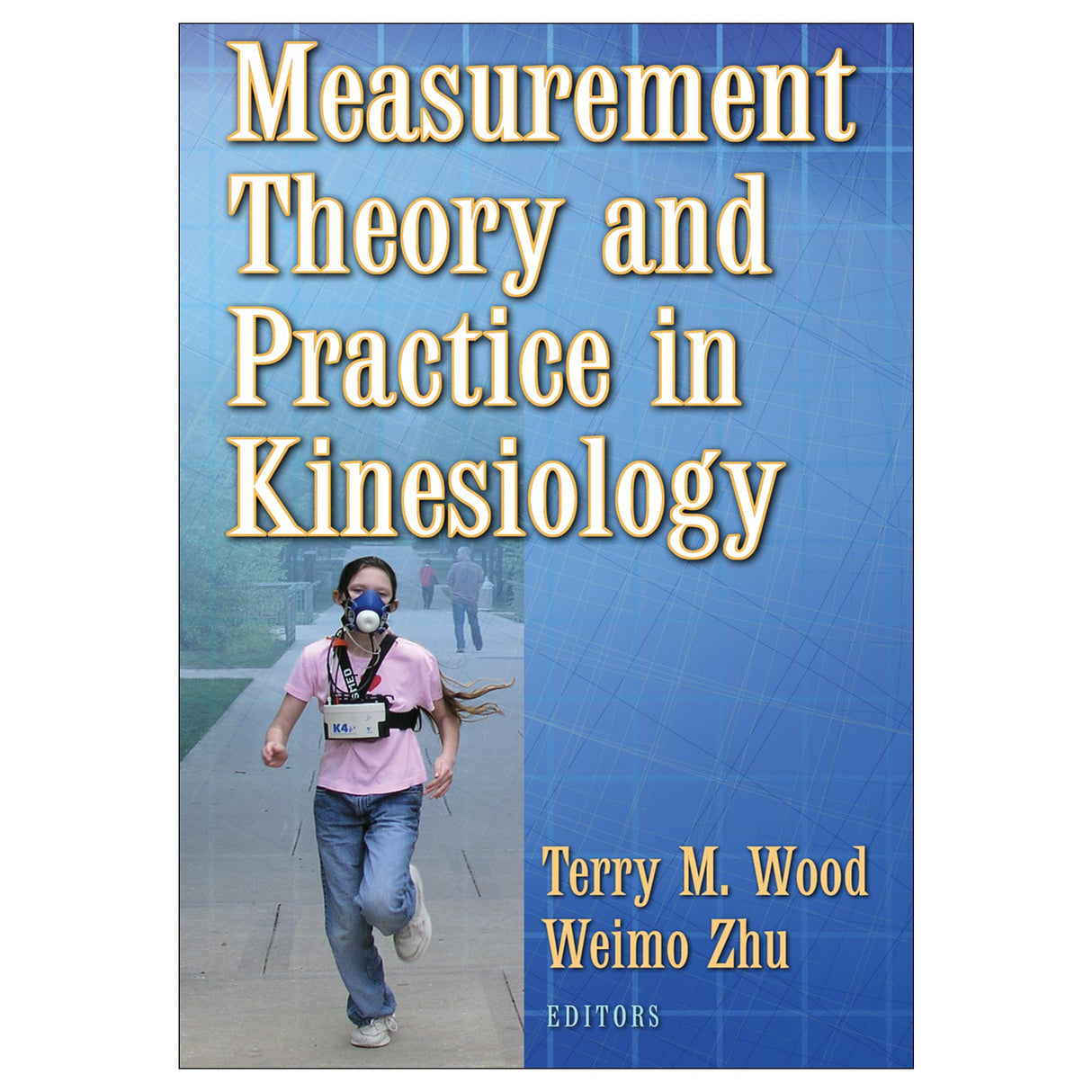Measurement Theory and Practice in Kinesiology
Author: Terry Wood, Weimo Zhu
$49.00 CAD
Simple, yet sophisticated, Measurement Theory and Practice in Kinesiology is presented without the need to work through rigorous equation sets. The text appeals to a broad readership interested in measurement. Researchers and students can fathom the conceptual basis for topical measurement techniques and their application, and they are exposed to measurement issues in various physical activity fields. The text grounds readers in measurement basics in an easy-to-understand fashion and is for non-measurement specialists who deal with measurement in various physical activity fields.
But it goes beyond simple. It takes full advantage of the advances in computer technology and programming to offer an array of advanced test construction and modeling methodologies to researchers and practitioners. And it describes new methods in handling both large and small data sets.
Measurement Theory and Practice in Kinesiology provides a contemporary reference on measurement issues. The authors take both a broad and focused look at measurement issues in the physical domain. Readers learn about the tools that can facilitate their more advanced work, particularly with regard to statistical techniques, and learn practical applications in areas such as educational assessment and preemployment physical testing.
The book is divided into four parts. Part I introduces readers to measurement basics, including validity, reliability, and test construction. Part II explores current issues in measurement, including ethical issues, computerized adaptive testing, item bias, and scaling and equating measures. Part III focuses on advanced statistical techniques, including analysis of large and small data sets, analysis of longitudinal data, and structural equation modeling and its applications. In part IV, the authors look at measurement in practice, current issues in physical education, measurement of physical activity, measurement issues in the clinical setting, epidemiology and physical activity, and preemployment physical testing.
With this simple yet sophisticated approach, Measurement Theory and Practice in Kinesiology can be used by students in graduate-level introductory measurement courses or as a reference by researchers and clinicians in the allied health professions.
Audience
A reference for measurement specialists, exercise scientists, clinical researchers, clinicians, and physical education teachers. Text for graduate-level introductory measurement courses in kinesiology.
Contents
Preface
List of Contributors
Part I Measurement Basics
Chapter 1 Introduction
Terry M. Wood
-Evolution of Measurement Theory and Practice
-Measurement in Practice
-Summary
Chapter 2 Validity
David A. Rowe and Matthew T. Mahar
-Definitional Stage
-Confirmatory Stage
-Theory-Testing Stage
-Reporting Validity
-Summary
Chapter 3 Reliability and Error of Measurement
Ted A. Baumgartner
-Reliability Considerations
-Reliability Estimation for Norm-Referenced Physical Performance Tests
-Standard Error of Measurement for Norm-Referenced Physical Performance Tests
-Reliability Estimation for Criterion-Referenced Physical Performance Tests
-Reliability Estimates for Scores From Knowledge Tests and Questionnaires
-Other Reliability Topics
-Summary
Chapter 4 Constructing Tests Using Item Response Theory
Weimo Zhu
-What Is IRT?
-Commonly Used IRT Models
-Assumptions Related to IRT
-Estimation of Item and Ability Parameters
-Addressing Model–Data Fit
-Some Unique Features and Advantages of IRT
-Item Bank and IRT-Based Test Construction
-Kinesiology Applications
-Software
-IRT Limitations and Future Direction
-Summary
Part II Current Issues in Measurement
Chapter 5 Ethical Issues in Measurement
Patricia Patterson
-Ethical Standards
-Technical Standards
-Construct Validity
-Example 1: Ethics and the Measurement of Physical Activity (PA)
-Example 2: Ethics and the Measurement of Effective Coaching
-Example 3: Ethics in Performance Assessments
-Summary
Chapter 6 Scaling, Equating, and Linking to Make Measures Interpretable
Weimo Zhu
-Scaling
-Equating and Linking
-Equating Methods
-Kinesiology Applications and Future Research Directions
-Summary
Chapter 7 Item Bias and Differential Item Functioning
Allan Cohen
-Bias and Differential Item Functioning
-Multidimensional Framework for DIF
-Detecting DIF
-Measures of the Amount of DIF
-Areas of Future DIF Research
-Summary
Chapter 8 Computerized Adaptive Testing
Richard C. Gershon and Betty A. Bergstrom
-Introduction to Computer-Based Testing
-Historical Background of Adaptive Testing
-Advantages of CAT
-Process of CAT
-Critical Issues in Constructing and Maintaining CAT
-CAT Today
-Summary
Part III Advanced Statistical Techniques
Chapter 9 Structural Equation Modeling and Its Applications in Exercise Science Research
Fuzhong Li and Peter Harmer
-Structural Equation Models
-Example Applications
-Extended Topics
-Summary
Chapter 10 Repeated Measures and Longitudinal Data Analysis
Ilhyeok Park and Robert W. Schutz
-Analysis of Variance for Repeated Measures Designs
-Hierarchical Linear Modeling With Longitudinal Data
-Structural Equation Modeling With Longitudinal Data
-Comparison Among Statistical Models: ANOVA vs. HLM vs. LCM
-Analysis of Change in the Near Future
-Summary
Chapter 11 Analyzing Very Large and Very Small Data Sets
Weimo Zhu and Anre Venter
-Analyzing Very Large Data Sets
-Analyzing Very Small Data Sets
-Summary
-Resources: Some Useful Web Links
Part IV Measurement in Practice
Chapter 12 Current Issues in Physical Education
Terry M. Wood
-Educational Reform and Assessment Practice
-Understanding New Assessment Practice
-Measurement Issues
-Evidence for Validity of Performance Assessments
-Summary
Chapter 13 Measuring Physical Activity
Michael J. LaMonte, Barbara E. Ainsworth, and Jared P. Reis
-Terminology
-Conceptual Framework for Physical Activity Measurement
-Measures of Energy Expenditure
-Direct Measures of Energy Expenditure
-Measures of Physical Activity
-Selecting a Method of Measurement
-Summary
Chapter 14 Epidemiology and Physical Activity
Richard A. Washburn, Rod K. Dishman, and Gregory Heath
-Physical Activity Epidemiology—A Historical Perspective
-Concepts and Methods in Physical Activity Epidemiology
-Evaluating Associations in Epidemiologic Studies
-Determining Cause in Epidemiologic Studies
-Summary
Chapter 15 Measurement Issues in the Clinical Setting
Marilyn A. Looney
-Evaluating Test Performance
-Evaluating the Diagnostic Accuracy of Tests
-Major Sources of Bias Affecting the Size of Diagnostic Statistics
-Summary
Chapter 16 Preemployment Physical Testing
Andrew S. Jackson
-Legal Issues
-Validation Study
-Summary
Glossary
References
Index
About the Editors





